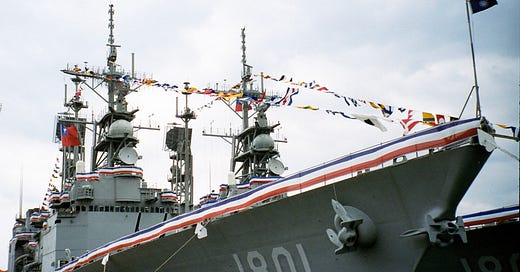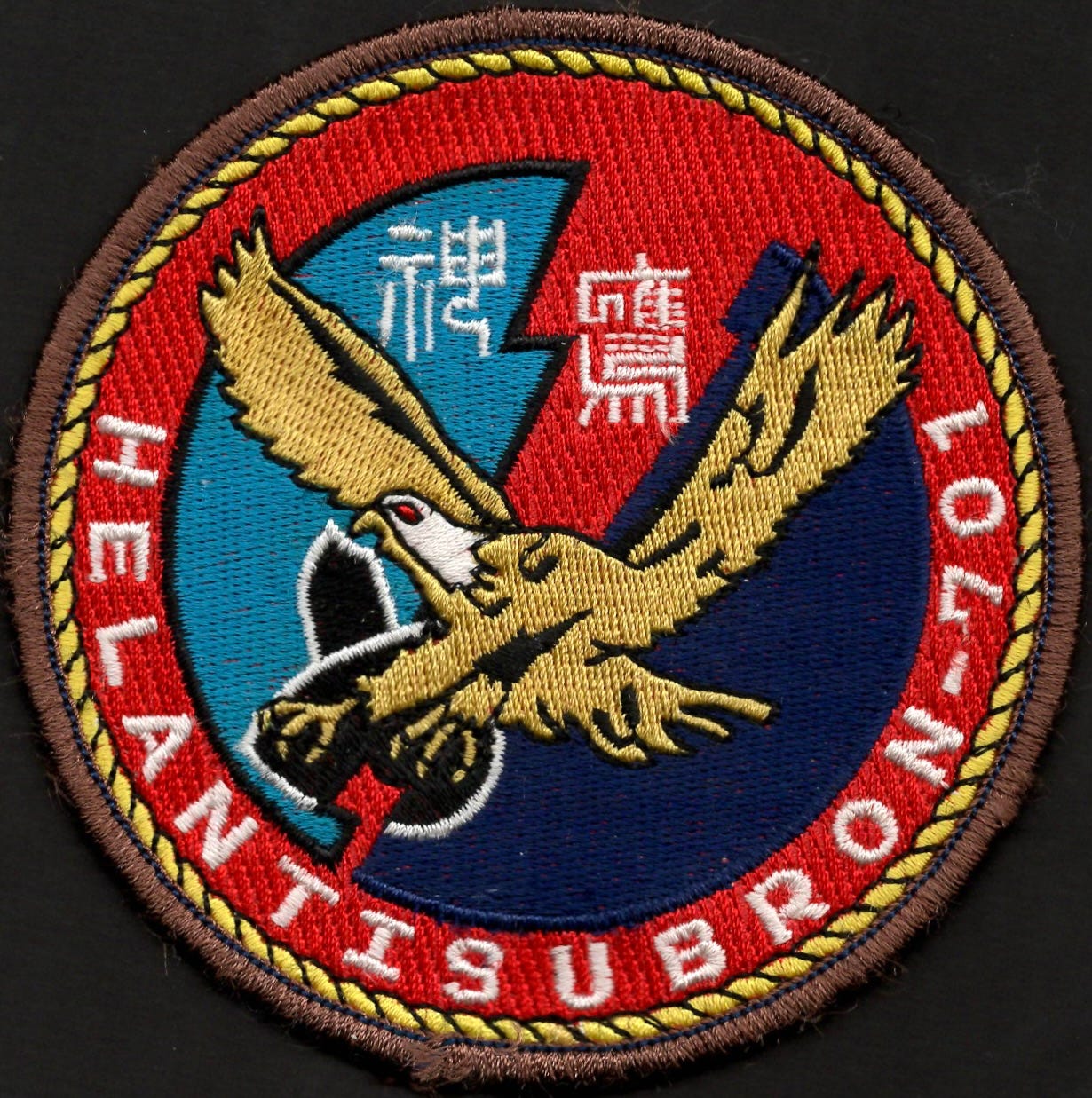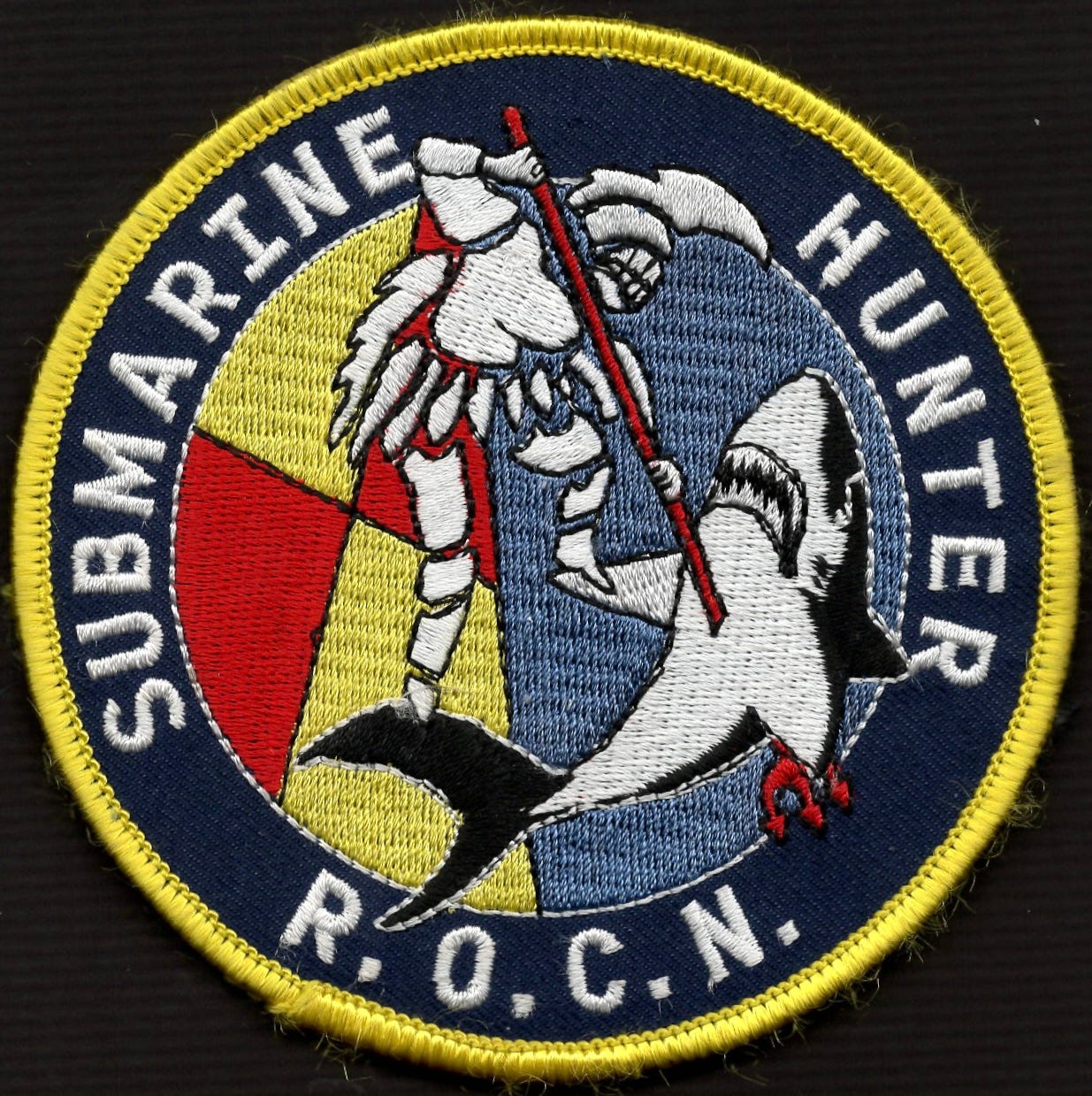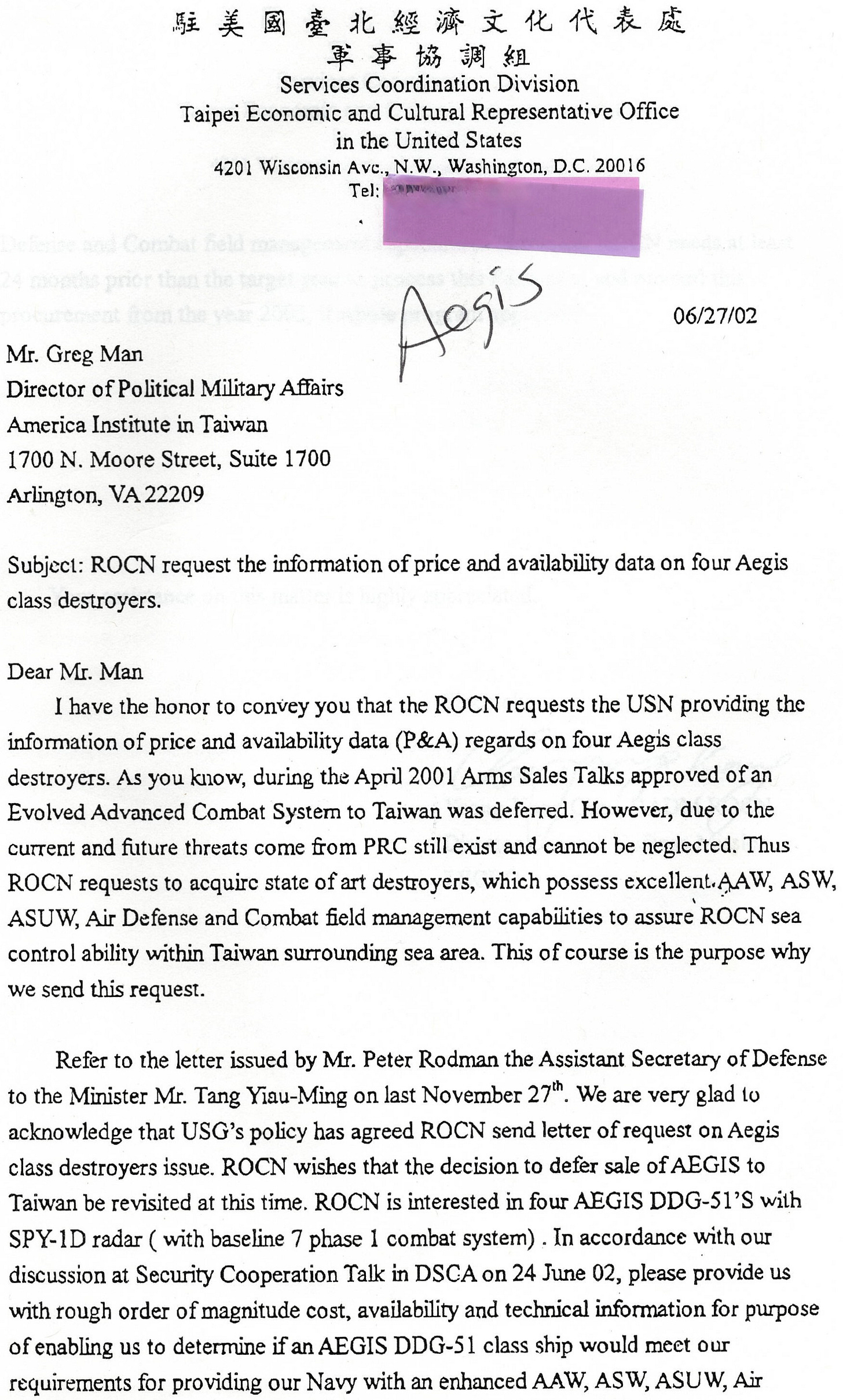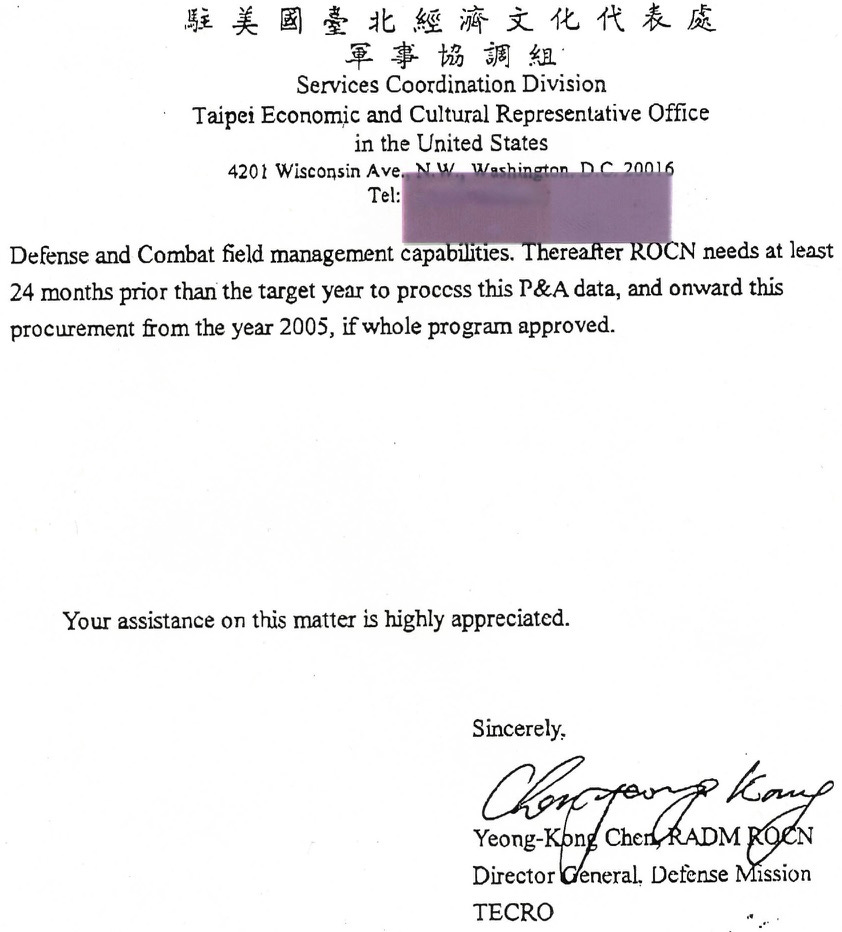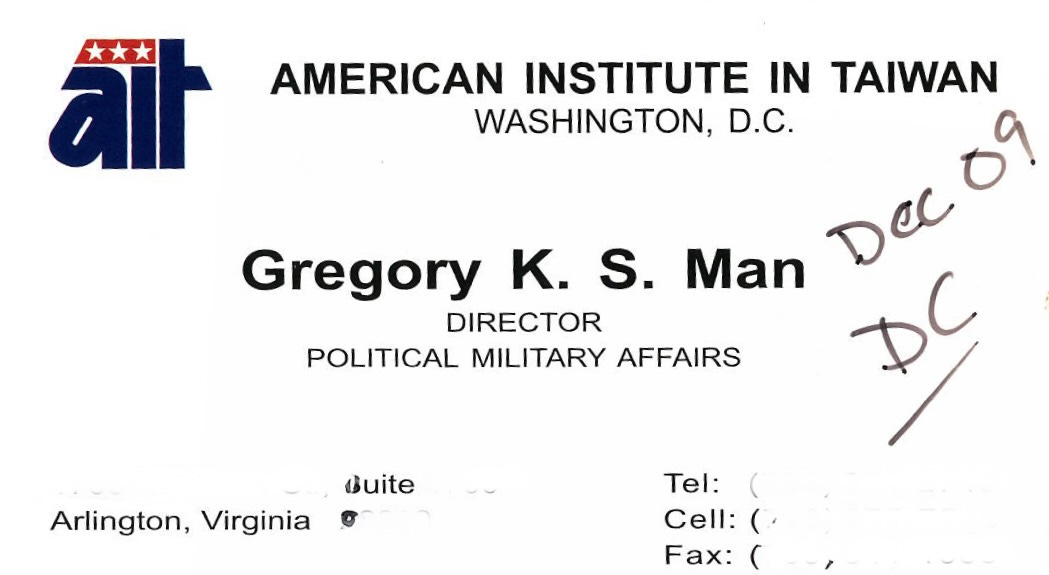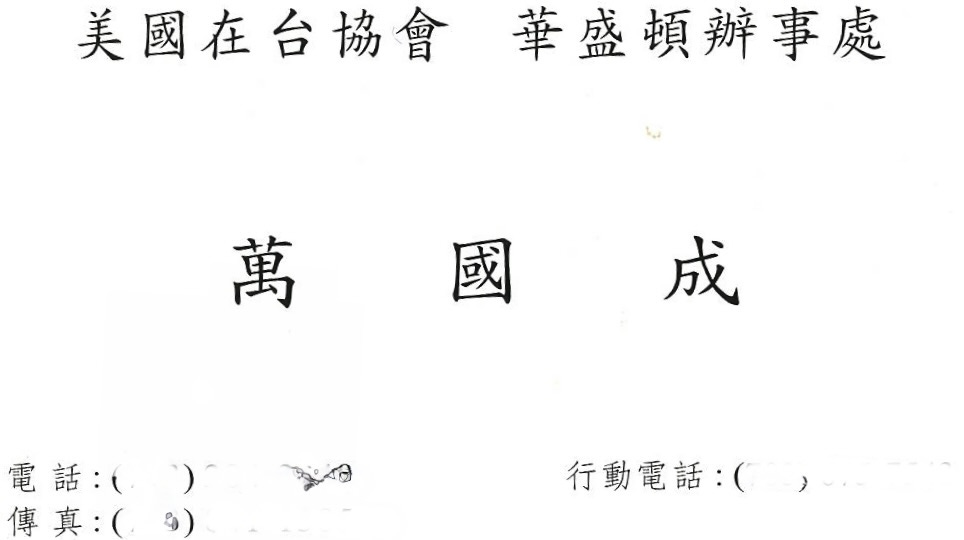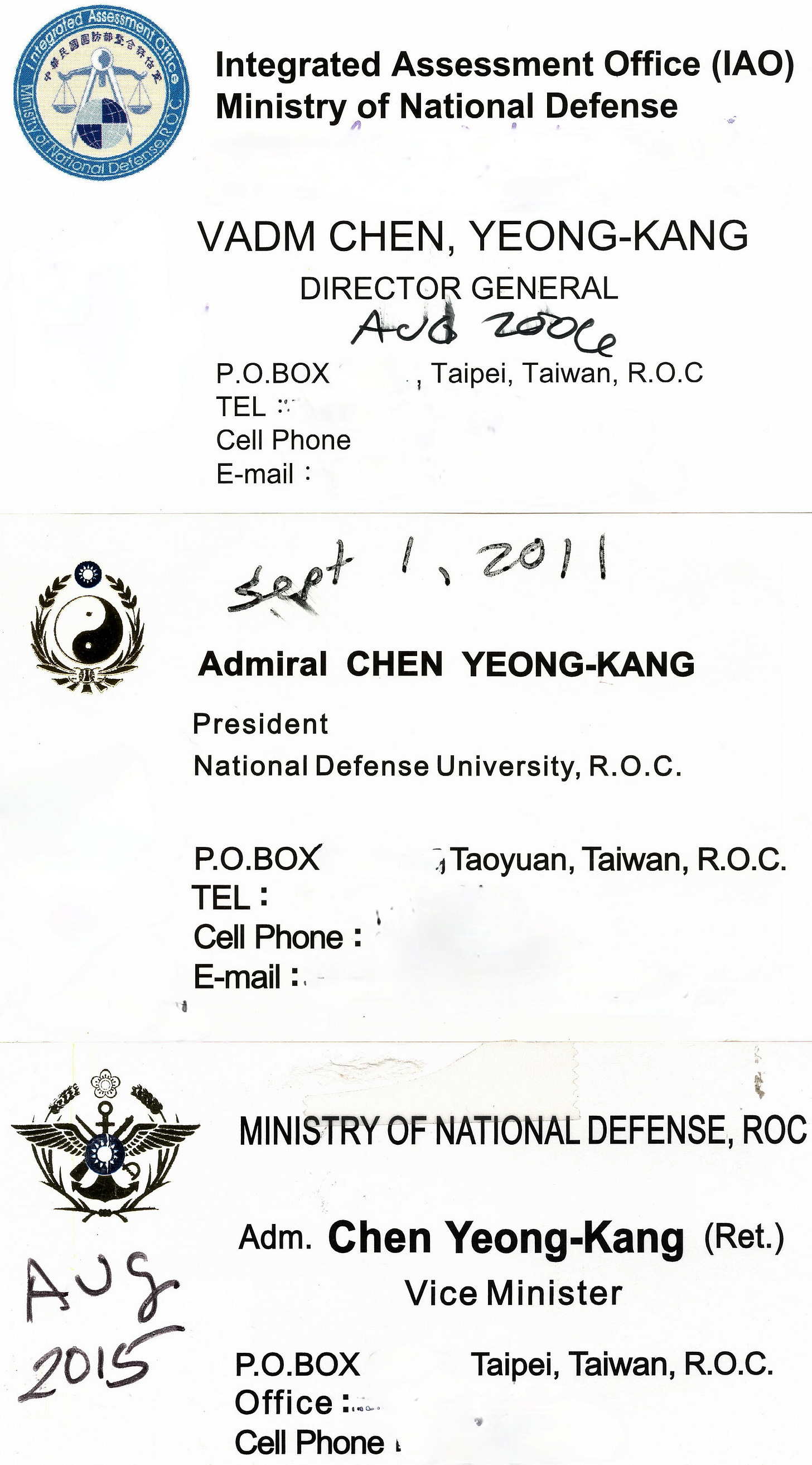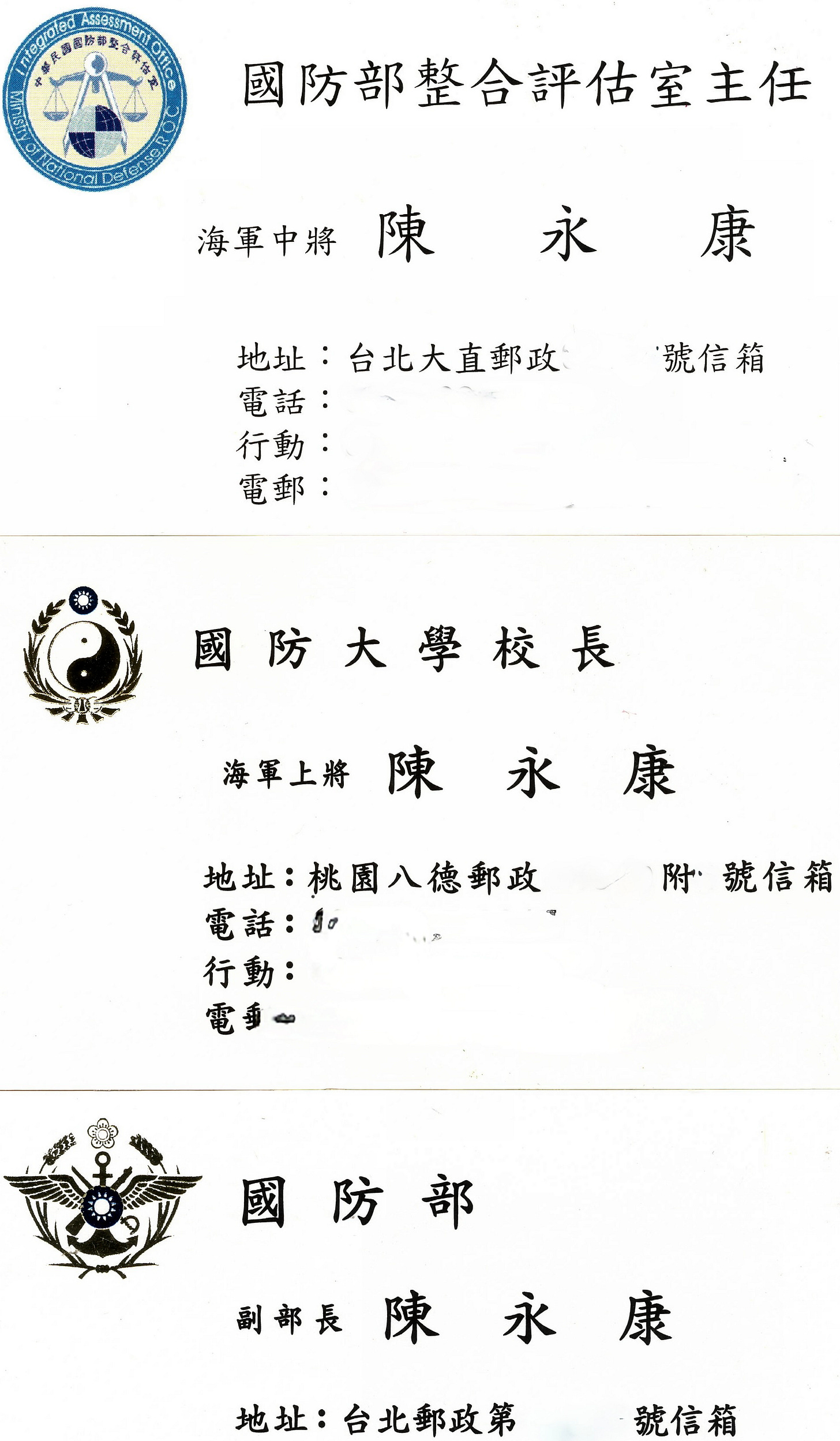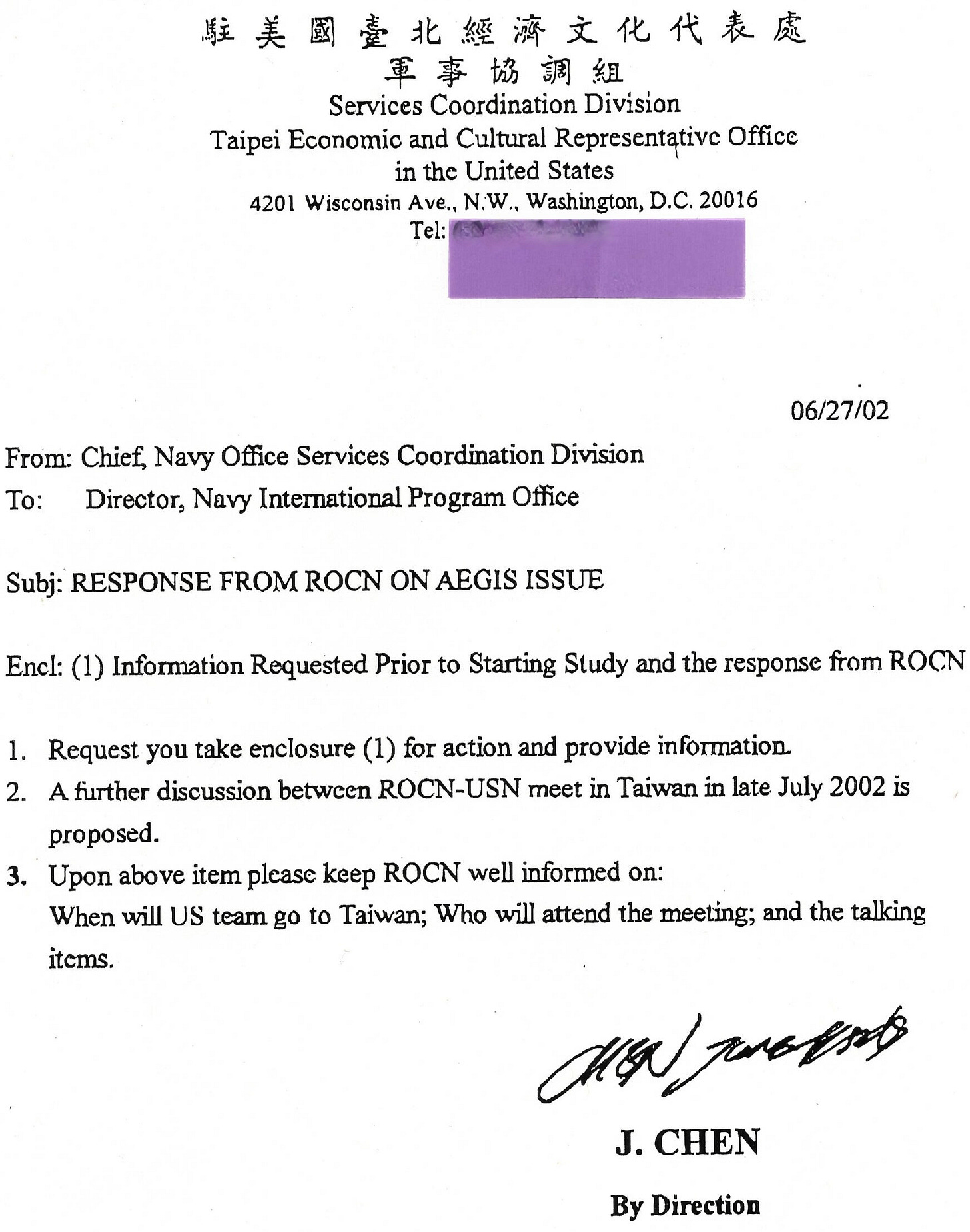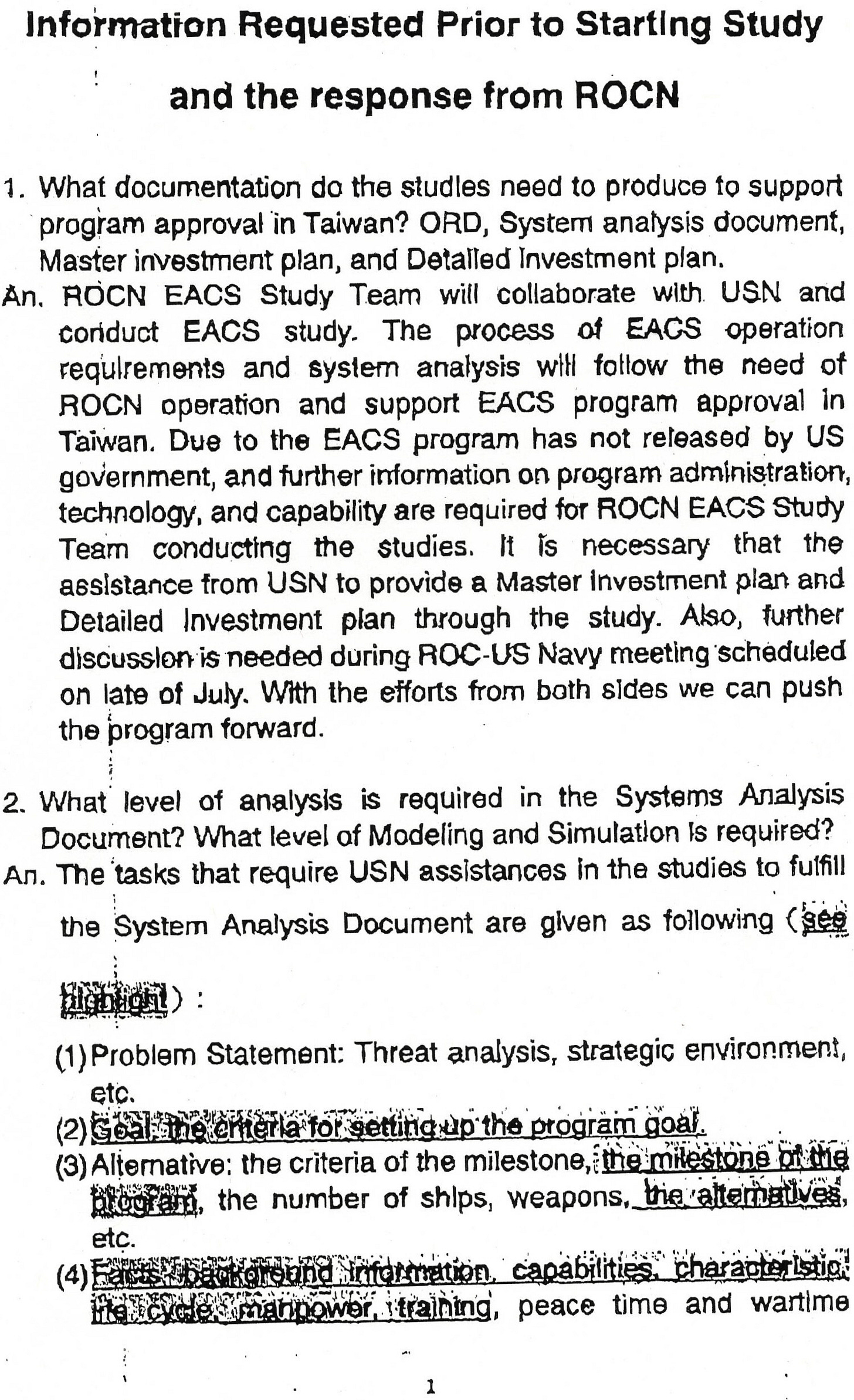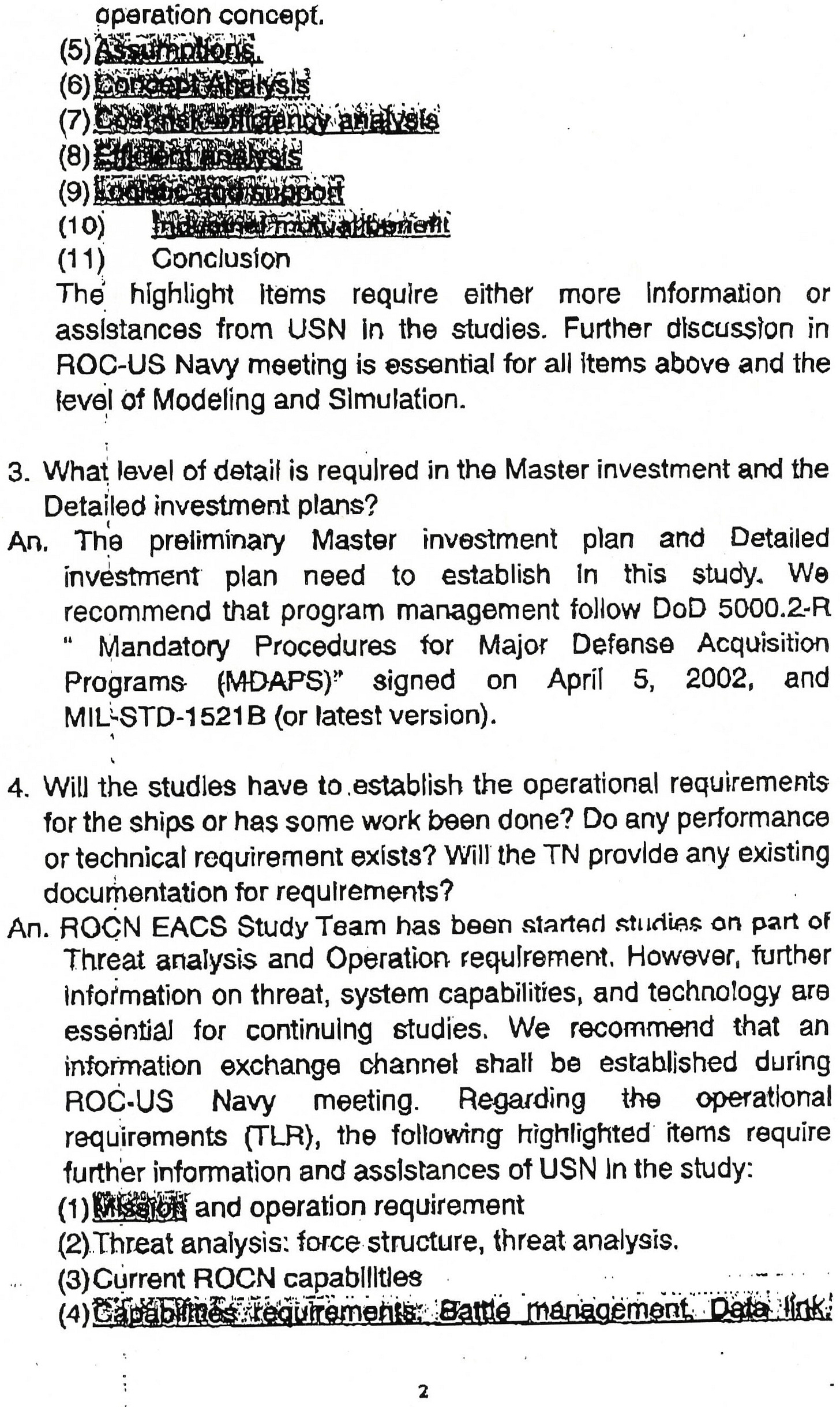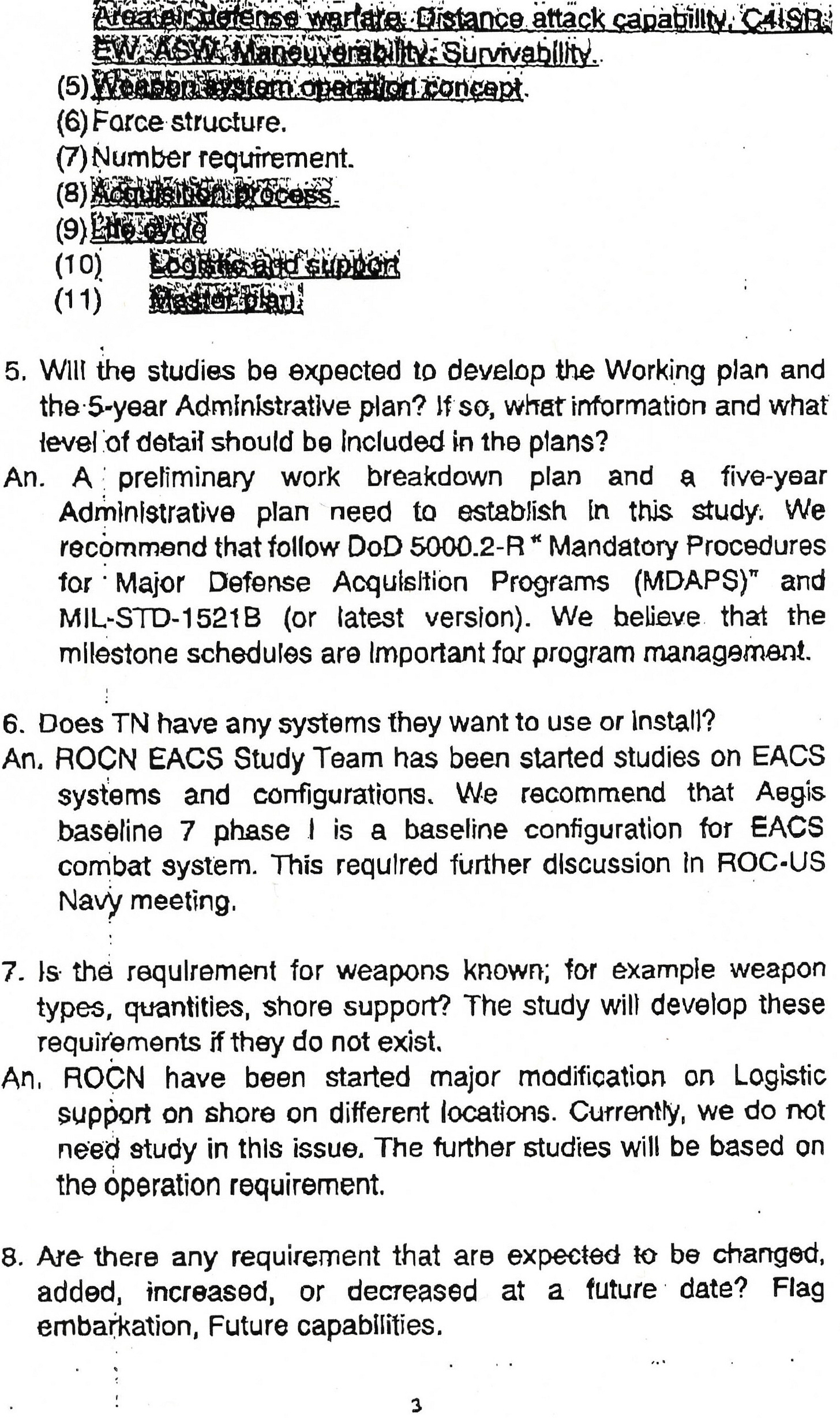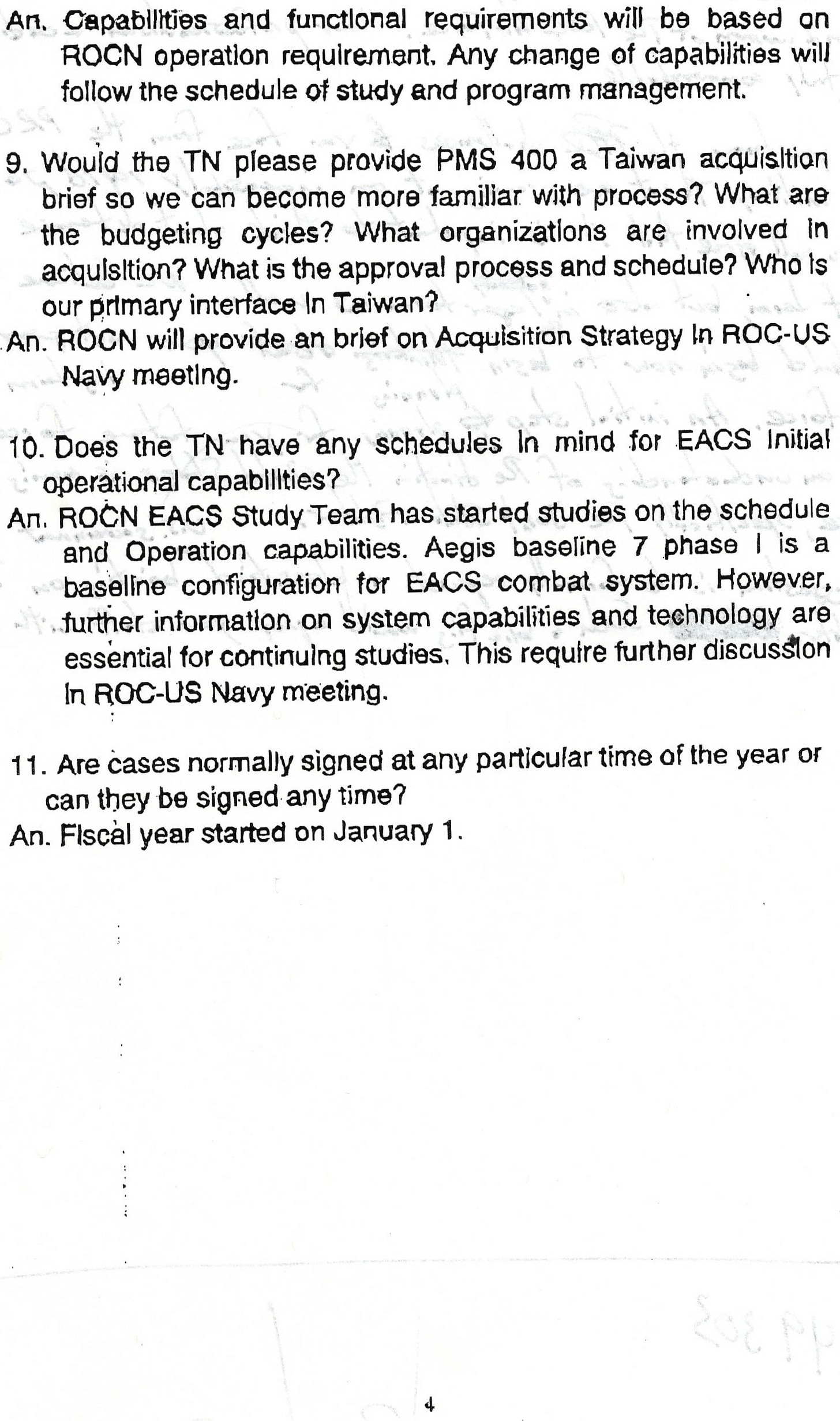China In Arms BOOKSTORE and GIFT SHOP!
Follow on Twitter
Subscribe: $5 Month/$50 Annual (unable to secure a subscription contact the bank for permission for Stripe deposits).
Paid Subscriptions can choose 2 free books.
19 October 2022
All photographs taken by Wendell Minnick
Taiwan Aegis and Kidd Destroyer Documents
How Aegis Became Kidd for Taiwan
Wendell Minnick (Whiskey Mike) 顏文德
TAIPEI - These documents are original and not classified within Taiwan’s secrecy rules that allow for public disclosure after 20 years. Though I have had these documents for over 15 years, I have never shared them with anyone until today. Also, some of the phone numbers and other details on the documents are redacted.
Since these documents are unique, some of this will only be available for paid subscribers only.
Taiwan first attempted to procure the Aegis Combat System (ACS) in the 1990s via the U.S. Foreign Military Sales (FMS) Program under the U.S. Defense Security Cooperation Agency (DSCA) without success. “Aegis” was equipped on the Arleigh Burke-class guided missile destroyer and the Ticonderoga-class guided missile cruiser, and Taiwan was attempting to either get a new build or retired vessel.
At the time, Beijing lobbied the U.S. government to deny the request, which was successful.
Despite China’s success at killing the procurement, the ACS was most likely beyond Taiwan’s capabilities to maintain and operate. This system is so complex that the U.S. Navy has civilian contractors aboard the vessels to maintain them. If the ACS went forward, the Taiwan would have had to add civilian contractors to the program on a permanent basis. This is not unusual in Taiwan, as their F-16 fighters and the Surveillance Radar Program (SRP) both have U.S. defense contractors.
Taiwan turned instead to procure four retired Kidd-class destroyers and an attempt was made to outfit them with an ASROC (Anti-Submarine Rocket) Vertical Launch System (VLS). The first choice, as the documents demonstrate, was the RUM 139A with a Mk-46 or Mk-54 hybrid lightweight torpedo capable of hitting a submarine in any direction (360 degree azimuth coverage).
Despite Lockheed Martin’s and the Pentagon’s best attempts to promote this option, the Taiwanese were forced, due to both budgetary constraints and technical modification issues and, to be honest, a lack of initiative, to settle on the more traditional two Mark 32 (324mm triple torpedo tubes for six Mk-46 torpedoes) and the use of anti-submarine warfare (ASW) helicopters, namely the Sikorsky S-70C(M)-1/2.
ABOVE: Patch for the 701st ASW Thunderhawk Squadron under the Naval Anti-Submarine Aviation Group, which also has a 702nd Thunderhawk Squadron of S-70s. I have included S-70 material at the end of this post for those interested in the Thunderhawk program. The Group also operates a few 500MD ASW helicopters, but these aircraft are questionable in capabilities due to their age (procured in the early 1980s; maintenance problems).
BELOW: Patch for the 500MD unit. Author collection.
This left Taiwan’s navy in a quandary. Now under Taiwan’s less than stellar choices for its security, the former Kidd’s anti-submarine warfare (ASW) engagement range (12,000 yards) with the Mk-46 was now limited to the detection performance of the bow mounted sonar, AN/SQS-53 (SQS-26), at 18,000 yards. This is a very poor use of the Kidd’s capability compared to the VLS ASROC option.
Even without VLS ASROC, the Kidd’s under the U.S. Navy were considered a “triple threat” (anti-sub/anti-surface/anti-air). Now, after the mothballing of a superior platform, the Taiwan navy was unwilling to make appropriate upgrades. The result was Taiwan was getting an inferior version of the Kidd’s sea monster status it had during their Cold War performance.
The Kidd-class destroyer sale was approved in January 2001 as an Excess Defense Article (EDA). Taiwan naval personnel were sent to Bremerton, Washington, to begin taking the ships out of mothball and installing systems.
On a side note, one Taiwan naval personnel member committed suicide and Taiwan media blamed the incident on the level of stress inflicted on him after being charged with such a complex project. The reason is unclear, but Taiwan’s media is often anti-military in their reporting and takes potshots whenever convenient. Taiwan is currently in a post-modern and post-heroic social/cultural/political narrative that encourages infantilism.
A bit of trivia, one of the Kidd’s, USS Callaghan (ROCS Suao), participated in the U.S. Navy response to the Third Taiwan Strait Crisis (1995-1996).
The other three are the USS Kidd (ROCS Tso Ying), USS Scott (ROCS Keelung), and USS Chandler (ROCS Makong).
CLICK TO ENLARGE:
ABOVE: Page 1/2 and 2/2. Republic of China Navy (ROCN-Taiwan) Letter of Request (LOR) for Price and Availability (P&A) data for four “Aegis class destroyers” from CHEN Yeong-Kong (陳永康), ROCN Director General, Defense Mission, Taipei Economic and Cultural Representative Office (TECRO/Taiwan’s de facto embassy), Washington, D.C. For whatever reason, these letters and documents are not dated at the top, but I did receive these documents on 2 August 2002 via a Fax from a U.S. government employee. I suspect the date is close to the correct transaction of the letters both above and below, as TANG Yao-ming (湯曜明) served from 1 February 2002 to 19 May 2004 (1940-2001). CHEN served in the TECRO position from December 1999 to January 2003. Peter Rodman (1943-2008) served from 16 July 2001 to 2 March 2007.
Unrelated to the actual date of the letter, from my own personal experience, letters from Taiwan government officials often make mistakes in titles and other data that has slowed arms sales for failing to meet bureaucratic and legalistic language and/or format. For example, there is no such thing as “Aegis class destroyers”. Rodman was not the “Assistant Secretary of Defense” per se as the letter states, but the Assistant Secretary of Defense for International Security Affairs.
Note to the reader on acronyms and other terms: AAW - anti-air warfare; AEGIS - mythological shield for the Greek deities Athena and Zeus; ASuW - anti-surface warfare; ASW - anti-submarine warfare; DDG-51 - Arleigh Burke-class guided-missile destroyer; Evolved Advanced Combat System (EACS), and SPY-1D.
NAME CARDS FOR VERIFICATION VIA WENDELL MINNICK
INFORMATION REQUESTED PRIOR TO STARTING STUDY AND THE RESPONSE FROM ROCN (4 Pages):
NOTE: EACS = Enhanced Advanced Combat System; ORD = Operational Requirements Document.
ABOVE: Highlighted material might be difficult to read; therefore:
”the System Analysis Document are given as following (see highlight)”
“(2) Goal, the criteria for setting up the program goal.”
“the milestone of the program,”
“the alternatives”
“(4) Facts, background information, capabilities, characteristic, life cycle, manpower, training”
NOTE: Evolved Advanced Combat System (EACS). MIL-STD-1521B. DoD 5000.2-R.
ABOVE: Highlighted material might be difficult to read; therefore:
“(5) Assumptions”
“(6) Concept Analysis”
“(7) Cost-risk efficiency analysis”
“(8) Efficient analysis”
“(9) Logistic and support”
“(10) Industrial mutual benefit”
“(1) Mission”
“(4) Capabilities requirements: Battle Management, Data link,”
NOTE: Evolved Advanced Combat System (EACS). C4ISR = Command, Control, Communications, Computers, Intelligence, Surveillance, Reconnaissance. EW = Electronic Warfare. ASW = Anti-Submarine Warfare.
ABOVE: Highlighted material might be difficult to read; therefore:
“Area air defense warfare, Distance attack capabilities, C4ISR, EW, ASW, Maneuverability, Survivability
“(8) Acquisition Process”
“(9) Life cycle”
“(10) Logistic and support”
(11) Master plan”
NOTE: Evolved Advanced Combat System (EACS). PMS 400 = Aegis Shipbuilding Project.

